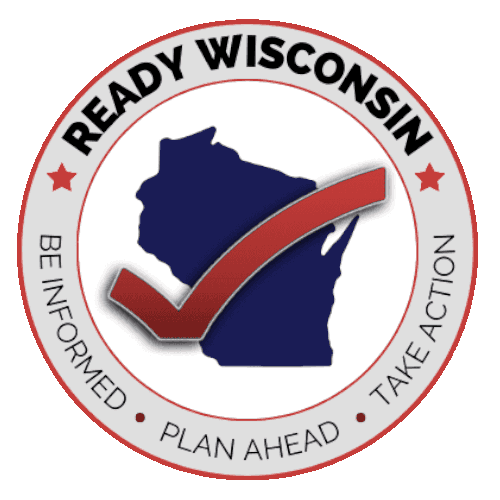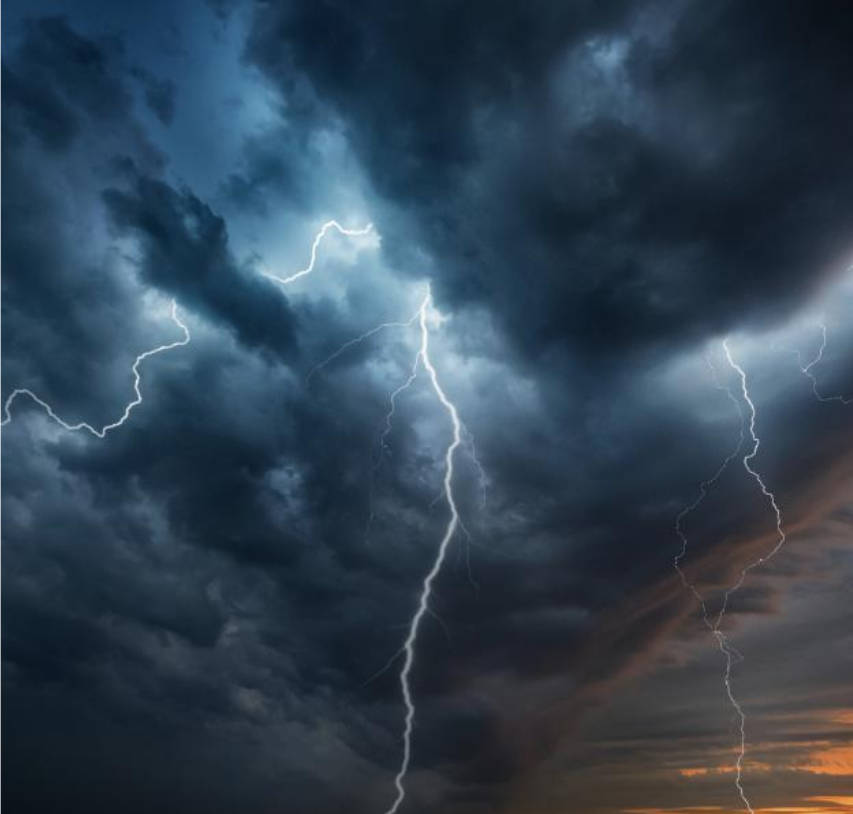How a federal disaster is declared
- State identifies disaster
- Joint damage assessments occur
- Damage is reviewed to determine extent of the disaster
- States determines if federal assistance is needed
- Major disaster declaration request is submitted
- President review request and determines if federal assistance is needed
- If yes, a federal disaster is declared
Q: Why didn’t FEMA come to my home when they were in the area doing these field assessments?
The joint preliminary damage assessment gives a broad overview of damage and does not catalog every individual loss. During the joint field assessment, there was a virtual component and an in-person component. The virtual component involved a review of information collected by local and county officials detailing the type of damage that occurred. This information was collected by 211 Wisconsin or by an initial assessment team.
Some of the information collected during the initial assessment was verified through the desk review and did not need in-person verification.
The field assessment targets an area of homes to get a representative sample of the damage. There was not a need to visit every home or speak to every homeowner during the initial and preliminary damage processes.
If your home was not reviewed or you were not present during the preliminary damage assessment, this does not affect potential federal assistance eligibility.
If you have not done so, contact your insurance agent to learn if your damage is covered, and if so, by how much. If they have not already done so, households should report any damage to their home from the recent floods to 211 Wisconsin. This can be done by dialing 2-1-1 or visiting the 211 Wisconsin website at https://211wisconsin.communityos.org/damage-report.
Q: FEMA and WEM are done looking at damaged homes during what is called a Joint Preliminary Damage Assessment. What happens next?
The field assessment done by FEMA, Wisconsin Emergency Management (WEM), and local officials concluded on Aug. 22. Once the information was validated and agreed upon by the field teams, WEM looked over the information to make a recommendation to the governor’s office if a federal disaster declaration is warranted. Based on that recommendation, the governor submitted a request for a major disaster declaration utilizing the information collected during the preliminary damage assessment. You can learn more about that and the findings here: https://content.govdelivery.com/accounts/WIGOV/bulletins/3efa9b4
Q: It’s been weeks since this flooding happened. When will I get federal assistance?
The time it takes to receive federal assistance can vary and there is no guarantee there will be federal assistance with a disaster.
In order for federal assistance to be available following a disaster, a presidential disaster declaration needs to be made. For that to occur, the governor needs to submit a request. You can learn more about the disaster declaration process here: https://www.fema.gov/disaster/how-declared.
The state must submit the request within 30 days of the incident’s occurrence. This is submitted by the governor to the FEMA Regional Administrator who then forwards it to the president through the FEMA Administrator. For the severe storms/ flooding that occurred in August 2025, that letter was submitted on August 27.
Once the letter is submitted, there is no strict legal timeline for a response to a state’s request for a federal disaster declaration.
You can learn more about the legal authorities on how FEMA responds to disasters here: https://www.fema.gov/disaster/authorities
If you need assistance or to connect with resources to help you with the recovery process, contact 211 Wisconsin. You can dial 2-1-1 or reach out online at https://211wisconsin.communityos.org/
Q: If the disaster declaration is denied, can the state appeal it?
The state can appeal a disaster declaration denial. The governor could appeal the denial within 30 days of the date of the denial letter and would include additional information justifying the need for federal assistance. That is outlined in 44 CFR section 206.46: https://www.ecfr.gov/current/title-44/chapter-I/subchapter-D/part-206/subpart-B/section-206.46
This one-time request for reconsideration, along with appropriate additional information, is submitted to the President through the appropriate Regional Administrator. The processing of this request is similar to the initial disaster declaration request.
Q: As a local municipality (e.g., city, village, town), what should we do to help our community access recovery resources?
If your community needs recovery resources, your municipal staff should contact your county
emergency management office as soon as possible. The county will assess the request and, if
they cannot fulfill it locally, they will escalate it to the State through Wisconsin Emergency
Management (WEM). This process ensures that resource needs are coordinated efficiently
and through the proper emergency management channels.
Q: We have a lot of damage in our homes, what do I do?
If you haven’t already done so, contact your insurance company to see if the damage is
covered. Be sure to document all damage, including taking photos and keeping receipts for
repairs. It is important to keep records of any estimates for repairs to your property, even if you
end up deferring the work.
Pay attention to announcements from your county, local, or tribal government officials. They
may ask for damage reports as well and will direct you how to do so. This is important for
municipalities, counties and the state to understand the disaster’s impact. This information
helps officials determine community needs and allocate resources, assistance requests, and
expedite the recovery process.
If officials ask you to report damages to 211 Wisconsin, that can be done by dialing 2-1-1 or
visiting https://211wisconsin.communityos.org/damage-report.
Q: My home is damaged. Is there financial assistance available from the state to help make repairs?
The state of Wisconsin does not have a standing assistance program to help private property
owners make repairs from flooding or storms. You should still report that damage to local
officials and take pictures. That information will be given to Wisconsin Emergency
Management (WEM) as it works to determine whether there is enough damage for Wisconsin
to request federal assistance for those who suffered damage to their primary residence.
Even if available, federal assistance for homeowners, known as individual assistance, is not
intended to cover all losses caused by a disaster. This program focuses on providing financial
and direct services to individuals and households to meet their basic critical needs and help
them get back on their feet after a disaster.
If the state seeks and receives a federal disaster declaration, information on Federal
Emergency Management Agency (FEMA) Individual Assistance Programs would be provided
by the federal government and the Wisconsin Department of Military Affairs Division of
Emergency Management.
If you have an immediate need for assistance, please contact 211 Wisconsin.
Q: I reported damage to the county, but nobody came to look at it yet. Why not?
Make sure you reported it to the appropriate place (verify if 2-1-1 or emergency management
office was contacted). If you reported damage, that information is being reviewed by local
officials and it is extremely valuable for helping to assess the impact of a disaster. Depending
on the situation, it may not be necessary for officials to visit all homes that reported damage.
They may have simply conducted a drive by assessment to verify damage if it is apparent from
the curb. If more information is needed or a request is made for a federal review of the
damage, it’s possible you may be contacted in the future.
Q: A state of emergency was declared. What does that mean?
A state of emergency can be declared by the Governor of Wisconsin for the state or any
portion of the state they determine an emergency exists from a disaster or the imminent threat
of disaster. A state of emergency in Wisconsin shall not exceed 60 days, unless it is extended
by joint resolution of the legislature. It can be found under Wisconsin State Law under statute
323.10.
A state of emergency declaration provides the legal means needed to deploy resources
efficiently and effectively to respond to a crisis or disaster to protect lives and property. At a
state level, counties or tribes need to request the resource before it can be deployed or
fulfilled.
Unless otherwise stated in the declaration, a state of emergency DOES NOT mean:
- Schools, businesses, or government offices close
- Driving or travel is banned
- Curfews are put in place
- The need to evacuate
Q: A letter was sent to request FEMA support after an initial damage assessment. What
happens next?
Arrangements are made when FEMA would be able to assist with the preliminary damage
assessment, preferably as soon as it is feasibly possible. Once availability and scheduling are
coordinated, the preliminary damage assessment process begins.
This starts with a review of the data WEM has received from counties and municipalities. In
addition, there will be teams assessing properties. These teams consist of FEMA, WEM,
locals, and other partners to complete the process in an accurate and timely matter. This
process occurs over a matter of days or longer.
Once this process is completed, a recommendation would be made to the governor’s office on
if the information collected would lead to a disaster declaration.
Q: I own a small business or a farm. Is there any assistance available for me right now?
Any state programs that may be available to assist small business owners would likely be
announced by the governor’s office or Wisconsin Economic Development Corporation
(WEDC). Businesses may also want to contact their local economic development
agency/chamber of commerce for information on local assistance that may be available.
At the federal level, information on Small Business Administration (SBA) programs will be
shared when available. Agricultural producers should contact their local Farm Services Agency
(FSA) office to report damage and see if any programs are available to assist them.
Q: What does the federal declaration process look like?
FEMA declares disasters through a process that involves requests from state, tribal, or
territorial governments, followed by a presidential decision. The process is triggered when a
disaster’s severity and magnitude are deemed to exceed the response capabilities of the local
and state governments, requiring federal assistance.
This starts off after a disaster occurs. A local damage assessment followed by a preliminary
damage assessment, often called joint damage assessments, is done to determine the extent
of the damage. After the assessments are reviewed, a recommendation is given to the
governor’s office if a federal disaster declaration should be requested, opening the pathway for
federal assistance.
Once that is submitted, the United States president reviews the recommendation and
determines if federal assistance is needed. If the president agrees with the state’s submission,
a federal disaster is declared.
A visual flowchart showing the process is below. You can also find more information at
https://www.fema.gov/disaster/how-declared
Q: My home is flooding all the time, and I want the government to buy me out. How does that process work?
Receiving funding and administering a grant for a home buyout is a complex process that can
take a long time to complete. Programs are not always available, and not all properties will
qualify. If you are interested in a buyout, contact your local emergency management office to
let them know and to get more information on what might be available. All state and federal
programs require that a local community apply on your behalf (e.g. sponsor your application).
The various programs available work through a local unit of government and have different
requirements.
For all grant programs, a local cost share is required and must be considered before an application
can begin. The local unit of government must commit to the cost share, but it can come from the
property owner or other types of services.

